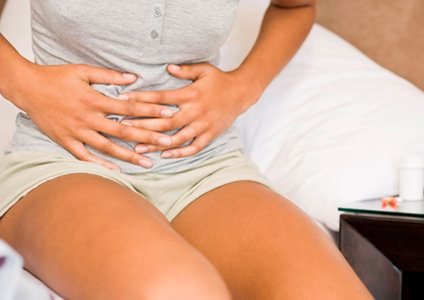Menstrual Problems – Types and Symptoms
Normal menstruation or the period occurs as a result of cyclic hormonal changes in a female. The female reproductive system consists of the ovaries, the uterus and the fallopian tube which connects the two, and the vaginal outlet. The ovaries produce eggs (ova). They are the main source of female hormones, which control the development of female bodily characteristics such as the bodily shape, breasts, and bodily hair. During each monthly menstrual cycle, an egg is released from one ovary. The egg travels from the ovary through the fallopian tube to the uterus. Unless pregnancy occurs, the cycle ends with the shedding of part of the inner lining of uterus, which results in menstruation. The day on which the period begins is counted as the first day of the cycle.
Having thus minimally understood at the biological changes in the female bodily, now you consider the following questions:
- Have you been more emotional, fatigued or irritable?
- Do you have more bloating or weight gain than usual?
- Do you have trouble concentrating or sleeping just prior to your periods?
- Are your periods heavier or are you bleeding longer than usual?
Menstrual Cramps / Period Pains: The monthly menstrual cycle for a lot of women can be painful. In some cases it becomes severely painful to the extent of needing medication and preventing them from doing their routine work. Contrary to common belief, there is sure and excellent treatment for menstrual cramps. The condition, called dysmenorrhoea, can begin at menarche – the age at which a girl first attains periods. It continues right through the menopausal age. Dysmenorrhoea is a symptom of a pre-existing disease.
There are two types of Dysmenorrhoea: The pains in spasmodic dysmenorrhoea are very severe, and almost as bad as labour pains. This condition is recurrent with every period, and generally subsides after the woman goes through childbirth.
Congestive Dysmenorrhoea: It tends to be slightly less severe in intensity, but is still debilitating, and continues right through.
Symptoms of Dysmenorrhoea (Menstrual Problem): The intensity of symptoms varies from person to person and from one period to another. The pain, mostly cramping pain, occurs in the abdominal region, the lower back, and can extend to the thighs and legs.
The pain is disabling and prevents the person from doing the regular work at home, or going to work. There may be nausea, vomiting, diarrhea and headache with severe pain. Fatigue and high irritability are also common. There may be excessive blood loss during the period, a condition called menorrhagia, which can co-exist with the pain.

